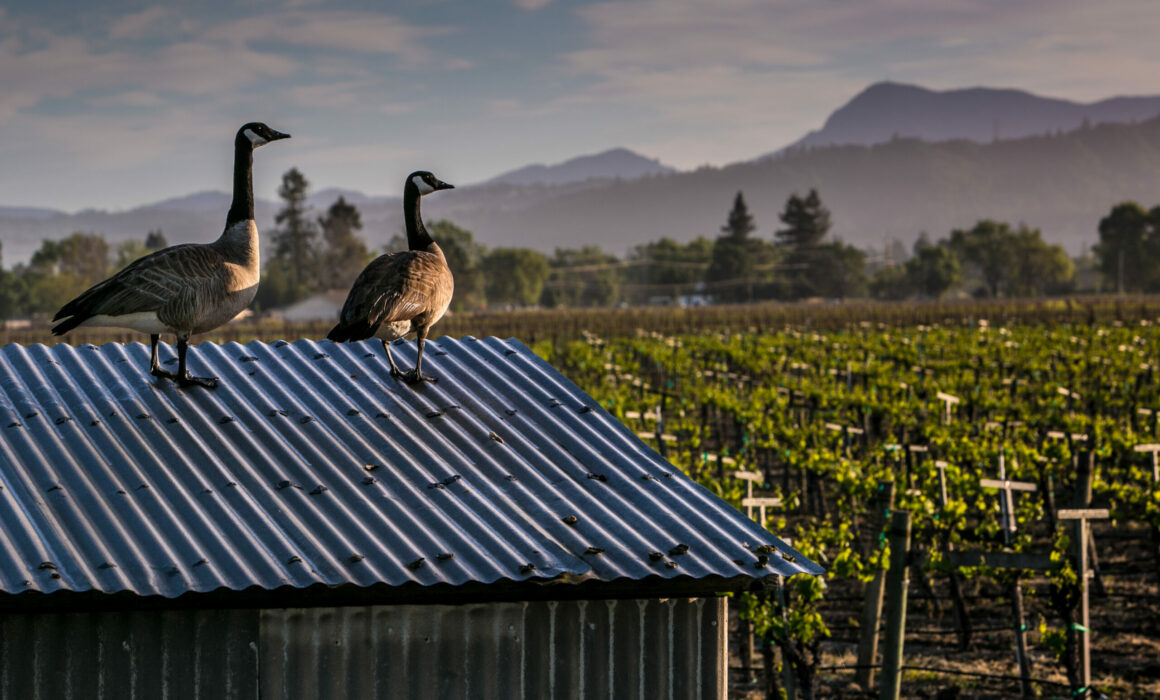Sonoma County’s Biodiversity
In addition to being an abundant place to farm, Sonoma County is also biodiverse, able to support a wide range of agriculture while also sustaining forests, woodlands and pasture, not to mention plenty of people.
The 76 miles of coastline that border Sonoma County to the west add to the formidable range of life that is supported here and helps to balance the region both economically and environmentally.
A way to encapsulate all living species, including plants, animals, bacteria and fungi, the term biodiversity was coined in the mid 1980s, though it’s probably fair to say that the concept of valuing variety – genes, species and ecosystems – is as old as earth itself.
It was Edward O. Wilson (1929-2021) who first amplified the term and as a result he is often referred to as the father of biodiversity. An American biologist born in Alabama who helped found the field of sociobiology, in addition to being a naturalist, Harvard professor and Pulitzer Prize-winning non-fiction writer, Wilson’s first area of specialty was ants. He is credited with discovering the first colony of fire ants in the United States when he was just 13.
Ants and insects later evolved into the study of animal and human behavior in his first book, “Sociobiology.” His later work, “The Diversity of Life,” in 1992 connected humans and the Earth’s biosphere. To create an “Encyclopedia of Life,” he was given $20 million from the MacArthur Foundation; it is hosted today by the Smithsonian’s National Museum of Natural History.
As a visiting professor at Duke University’s Nicholas School of the Environment, Wilson would tell students to “Be an ‘ologist.” He believed strongly that scientific discovery is an important element of biodiversity, that humans have so far discovered and documented about 2 million organisms but, he estimated, there are probably a much bigger number of 8 or 9 million on the planet.
You can’t protect what you don’t know. Wilson felt strongly that new generations of young scientists were absolutely necessary to discover what else was out there.
While biologists like Wilson thought about biodiversity from a macro perspective, here in Sonoma County it’s good to think of it from a micro, or regional perspective. While we are a deeply agricultural place, and wine grapes are currently our most viable crop, the 59,000 acres of grapes grown take up less than 6% of the total 1.1 million acres of land mass that is Sonoma County.
Additionally, over 95% of the farms in Sonoma County are family owned and relatively small, with 80% consisting of 100 acres or less and 40% less than 20 acres.
Most of these grape growers have farmed other crops over the years and have transitioned to winegrapes so they can afford to keep farming. Today many still grow and farm other things like apples, hay, poultry or dairy and in addition to orchards, farms and nurseries, Sonoma County is home to livestock ranches, coastal fisheries/oyster farms and cannabis. It is estimated that for every 1 acre of vineyards, Sonoma County farmers grow 2 acres of something else, diversifying the landscape through these efforts.
Within the vineyard, the common grapevine (Vitis vinifera) is considered a major tree crop with high genetic and phenotypic diversity, with an estimated 6,000 to 10,000 cultivars (including those for table grapes) estimated to exist worldwide.
Rootstock and clonal material are also diverse and varied within sites and across sites, another way to ensure biodiversity. Future rootstock breeding is looking to diversify even further as another way to fight a changing climate and pest pressure.
Many growers also maintain native landscapes amidst a healthy mix of grazing land, orchards, wetlands and managed forests. This also maintains biodiversity.
This both keeps the environment and the economy in better health – the don’t put your eggs all in one basket philosophy, the hedging of one’s bets. It’s smart business and important climate stewardship, valuable insurance against unpredictable conditions.
Sonoma County’s Million Dollar Crops (2021 Sonoma County Crop Report)
Grapes: $541 million
Milk: $124 million
Nursery: Ornamentals $26 million
Livestock/Poultry products: $26 million
Nursery miscellaneous: $22 million
Cattle/calves: $21 million
Misc Livestock/Poultry: $12 million
Timber: $11 million
Commercial fish: $11 million
Vegetables: $8 million
Cut Flowers: $6 million
Bedding plants: $6 million
Sheep/lambs: $5 million
Apples (late varieties + Gravenstein, including canned juice, cider and vinegar): $3 million
Rye/oat hay: $2 million


